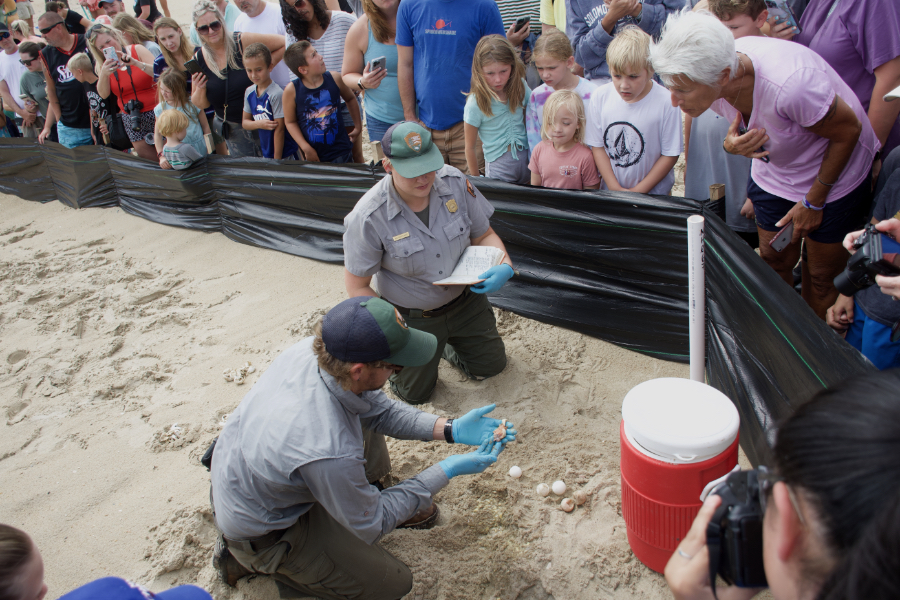Cape Hatteras National Seashore is having a pretty good year for nesting sea turtles this year. Most of them are loggerheads, which is to be expected, but included in that more than 300 nests are a few Green Turtles, a couple Kemps Ridley and even a Leatherback—which is very surprising.
So it’s been a good year.
Down at Buxton today the park rangers invite the public to take a look with them at a nest that had been relocated from the north end of Buxton when the beach nourishment project began there.
The nest, loggerhead, had already had some hatchlings find their way to the ocean, so the rangers weren’t all that optimistic about finding any viable eggs left. And most of the eggs were clearly not viable—broken in some cases, smashed in. It was evident that in those cases, the developing loggerhead had no chance of hatching.
They did, however, find four viable eggs and brought out four miniature loggerhead turtles. The hatchlings were gently placed in a bucket with sand, and will be released some evening very soon.
They could not be released now. The daylight would disorient them and there is a good chance they would not even make it into the water. When they are released, they’ll be placed on the beach very close to the ocean, and once in the water, they’re on their own.
The survival rate of sea turtles from egg to adulthood is incredibly low—much lower than 1%. Not all eggs hatch, and even when the hatchlings make it to the sea there are plenty of predators waiting for them. Until they get significantly larger and stronger, the hatchling, which quite literally can fit in the palm of an adult’s hand, are an easy meal for just about every surf dwelling fish there is.
But it was great to see the four baby loggerheads today. Maybe someday, if one of them is a female, she’ll be back at Cape Hatteras to lay her eggs.
Nature on the Outer Banks is a wonder and calls out to be explored. Start your journey of discovery on the Outer Banks with a stay in a Brindley Beach Vacations home.

